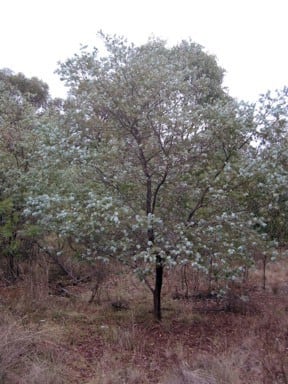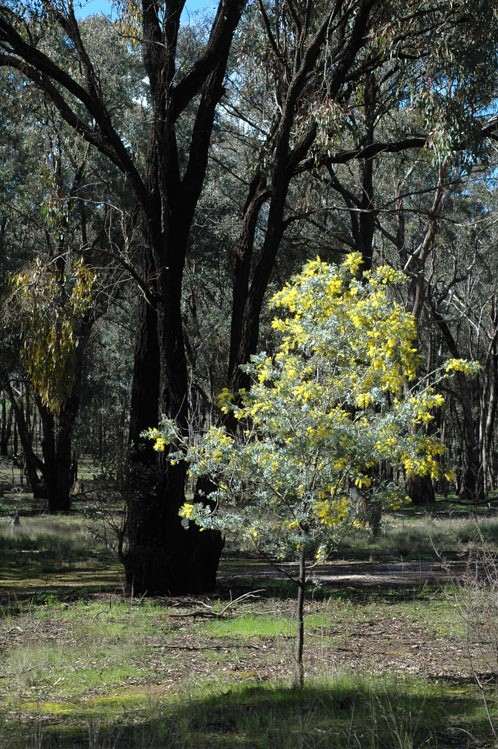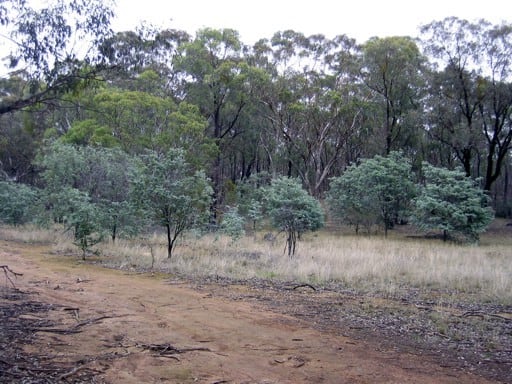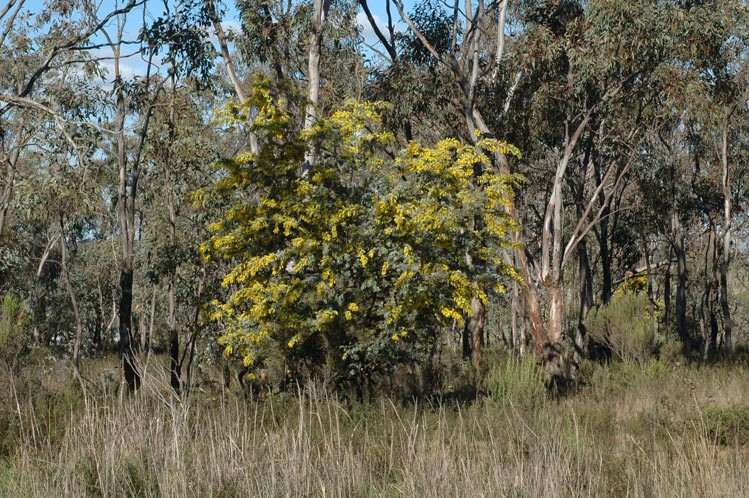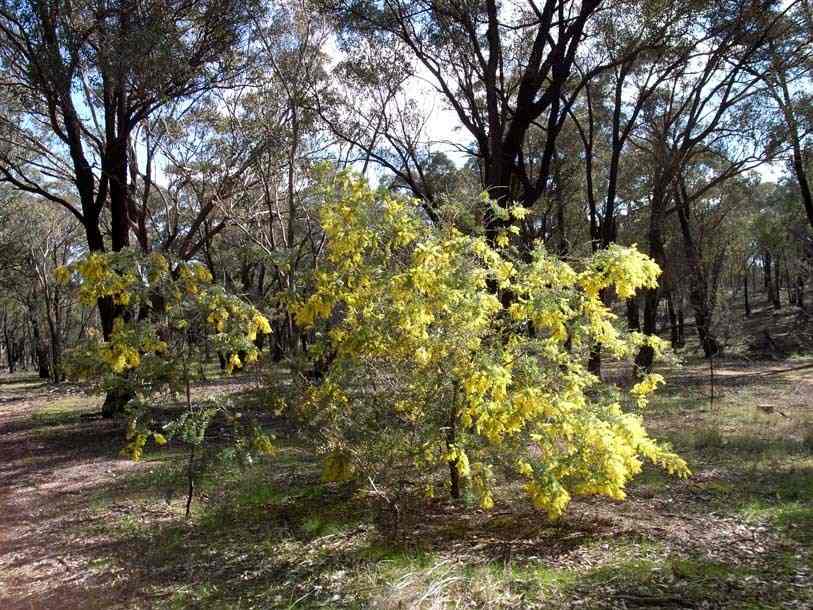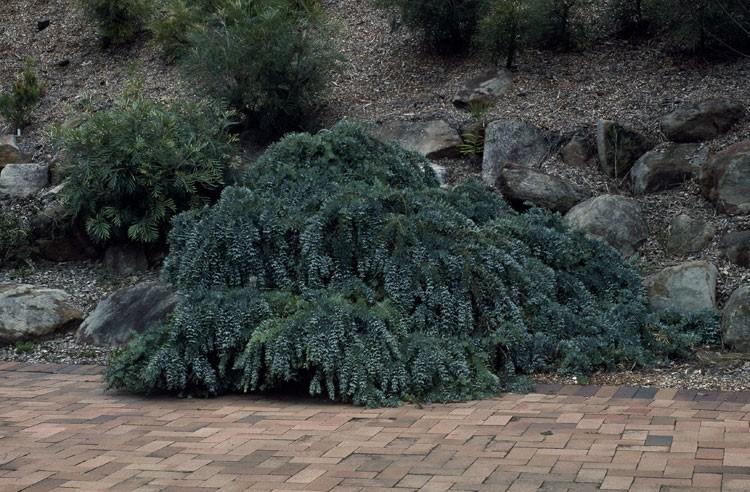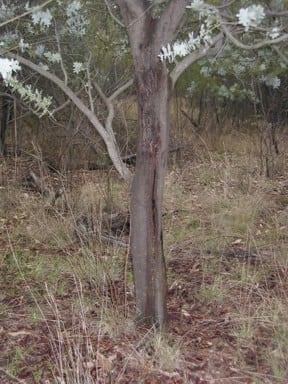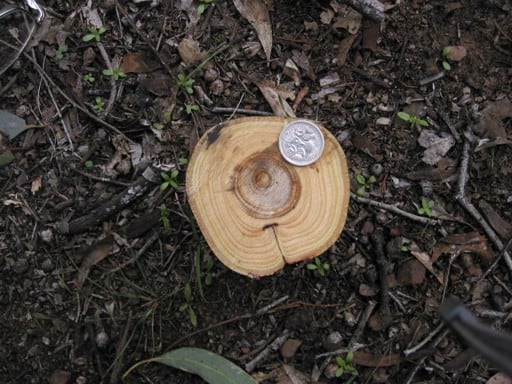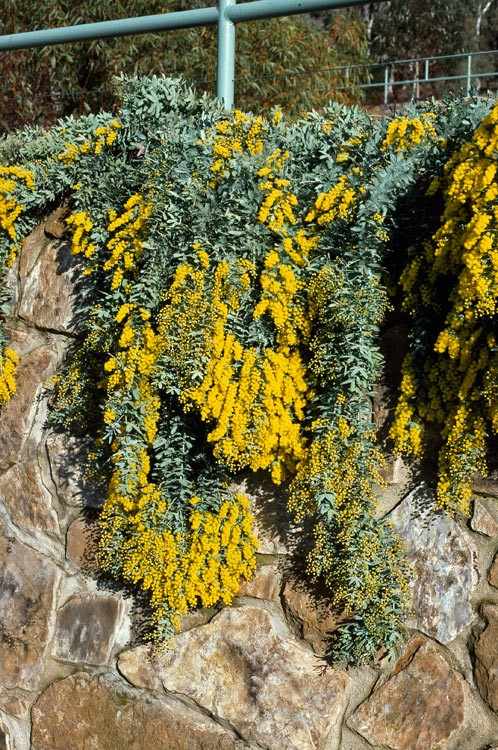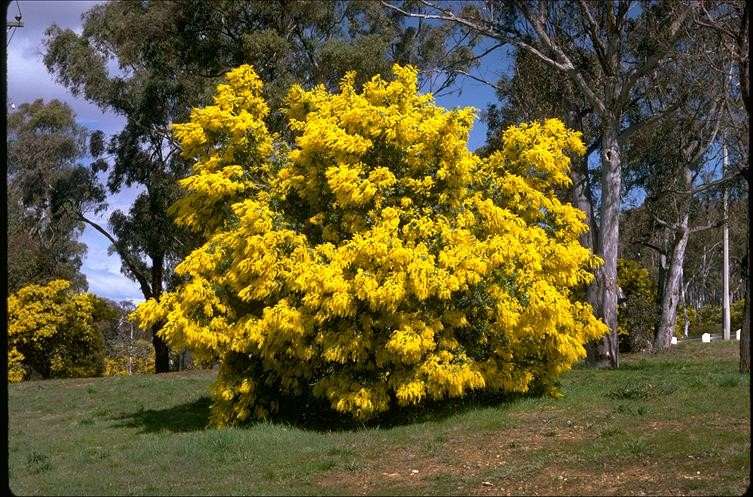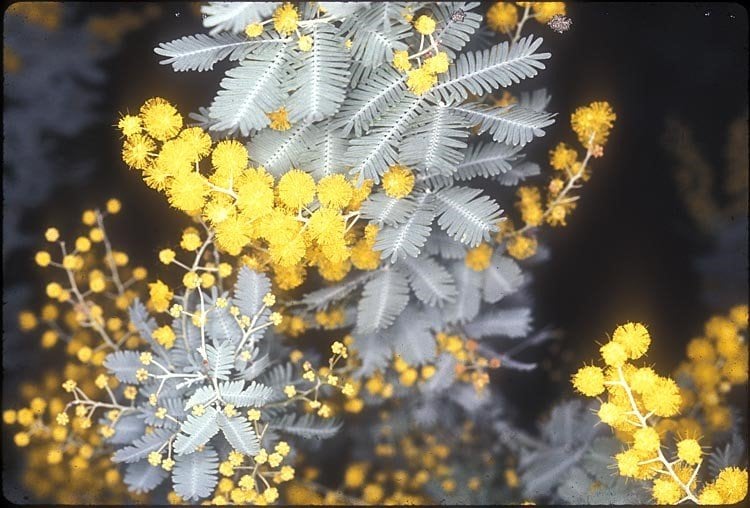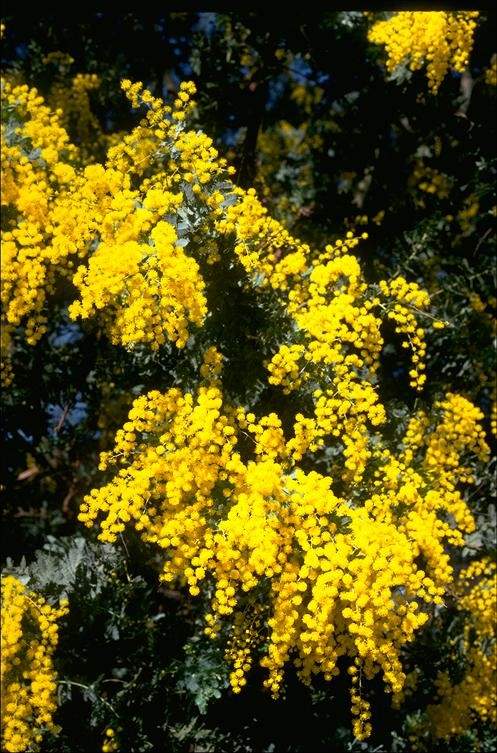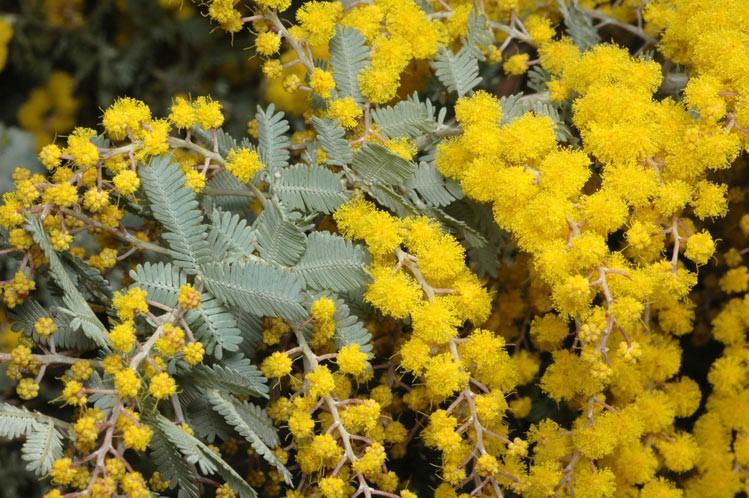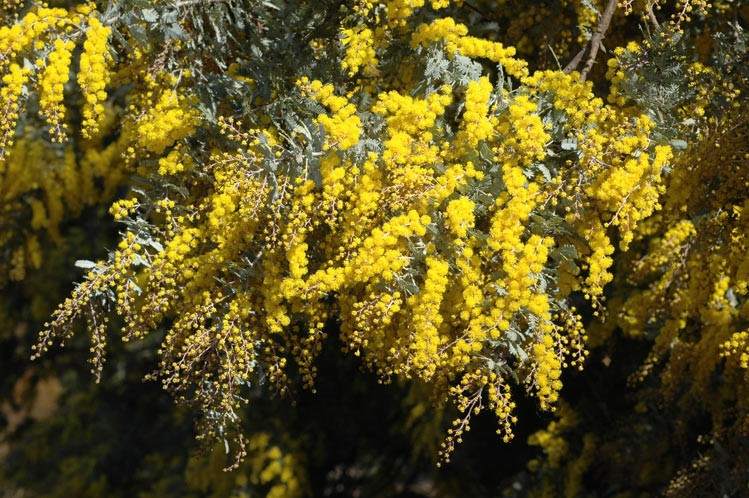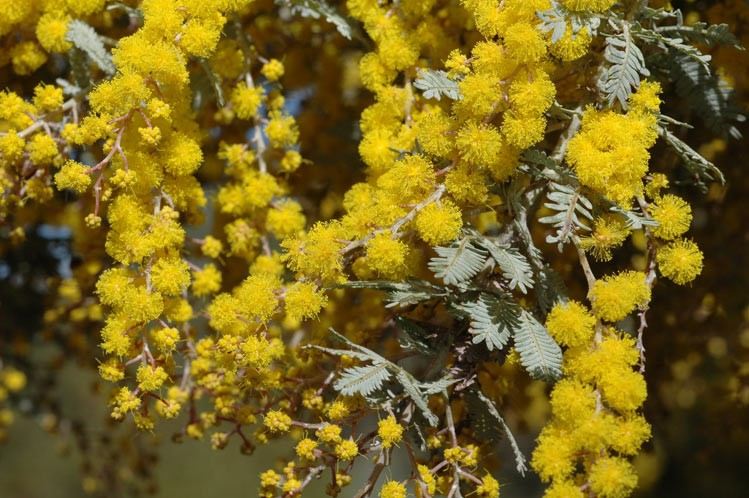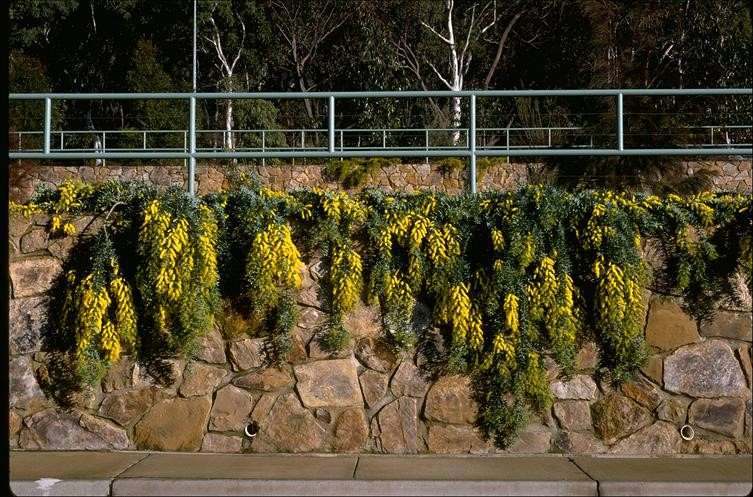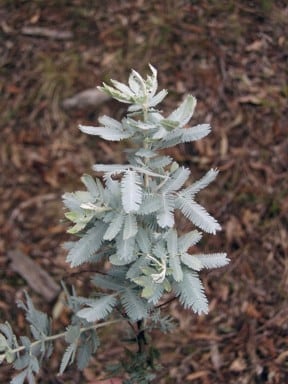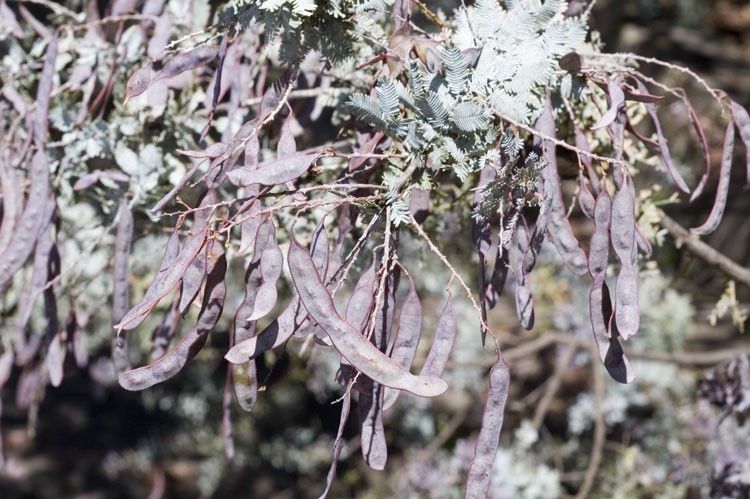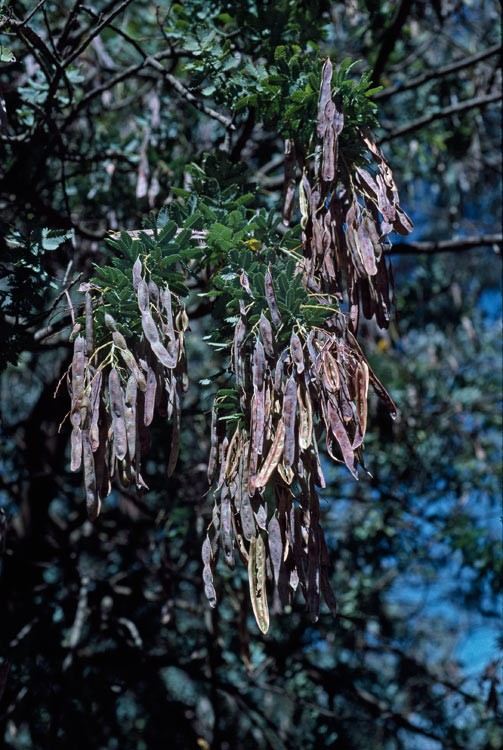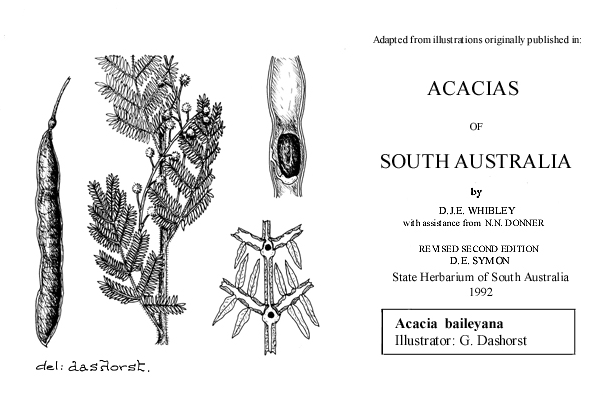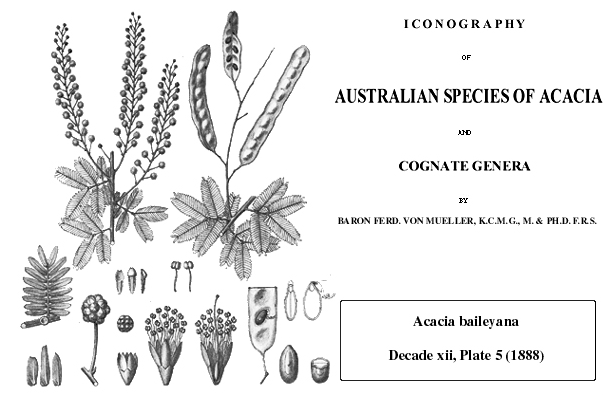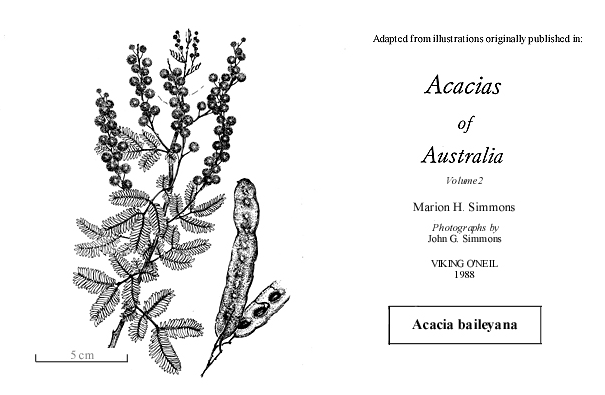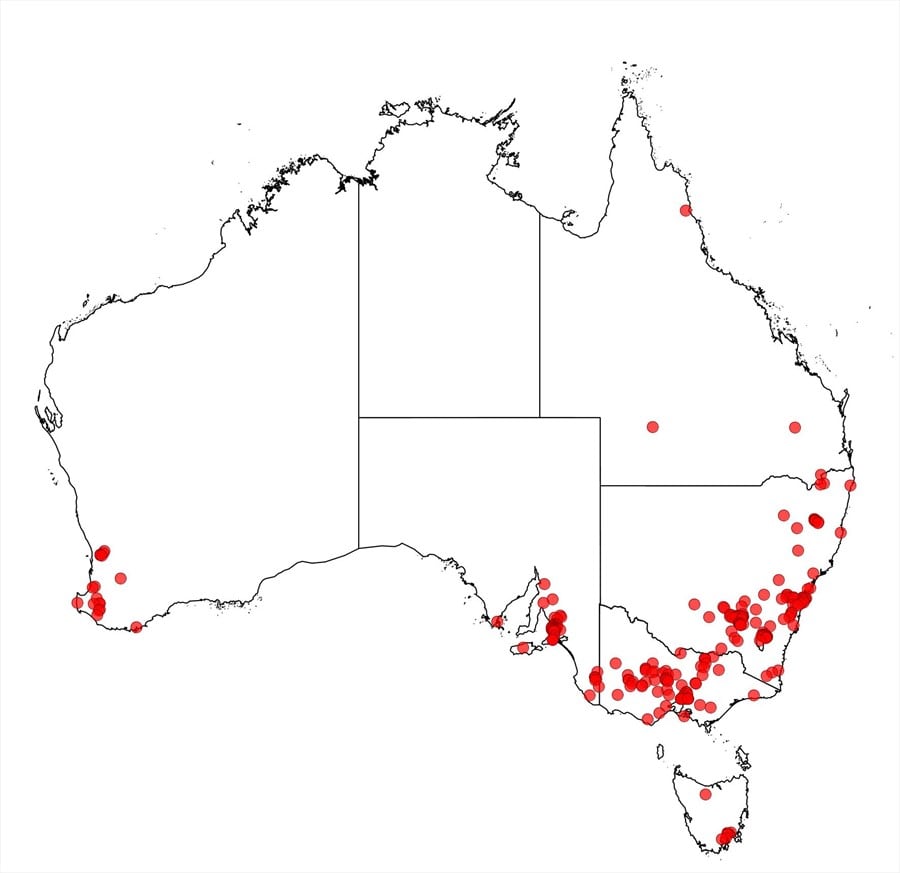Acacia baileyana F.Muell.
WATTLE
Acacias of Australia
Common Name
Cootamundra Wattle
Family
Fabaceae
Distribution
Native to Temora–Cootamundra–Stockinbingal district, N.S.W. Naturalised in W.A., S.A., Qld, N.S.W., A.C.T. and Vic.
Description
Shrub or tree to 10 m high; d.b.h. to 25 cm; crown spreading. Bark smooth, grey or brown. Branchlets angled towards apices otherwise ±terete, pruinose, glabrous or softly white-pilose; ridges to 0.2 mm high. Young foliage-tips pale blue. Leaves subcoriaceous, blue-grey, glaucous, subsessile with basal pinnae arising ±immediately above pulvinus; rachis (0.3–) 1–2.5 cm long, with 1 prominent orbicular or oblong glabrous gland at base of upper 1–3 pairs of pinnae; interjugary glands absent; pinnae (1–) 2–4 (–6) pairs, 1–2.5 (–3) cm long; pinnules (4–) 8–24 pairs, closely spaced, cultrate to oblong, (3–) 5–8 mm long, 0.7–1.6 mm wide, glabrous, with ±prominent midnerve and 1 or 2 ±discernible secondary nerves and sometimes lateral nerves, with apex rounded to subacute. Inflorescences in axillary racemes 3–10 cm long, or terminal false-panicles; axes much longer than the leaves; peduncles 3–7 mm long. Heads globular, 11–20-flowered, golden. Pods 3–10 cm long, 7. 5–15 mm wide, coriaceous, bluish at first, later brown to black, glabrous. n = 13, I.V.Newman, J. Linn. Soc., Bot. 49: 166 (1933).
Phenology
Flowers June–Sept.; fruits Oct.–Jan.
Habitat
Grows in open woodland, in stony, undulating or hilly country, on granites and porphyries.
Specimens
W.A.: Mundaring Weir townsite, G.J.Keighery 9120 (NSW, PERTH). S.A.: Naracoorte, 8 miles [12.9 km] out, R.Filson 3034 (MEL, NSW). Qld: 10 km N of Stanthorpe, L.Pedley A7418 (BRI n.v.). N.S.W.: 12.3 km W of Dudauman Exchange, R.G.Coveny 11981 & P.D.Hind (B, MO, NSW, NY, PE, PERTH); 26 km S of West Wyalong on Narrandera road, G.M.Cunningham 2403 & P.L.Milthorpe (NSW); 1 mile [1.6 km] S of Lawson, Blue Mtns, 14 Jan. 1961, M.D.Tindale s.n. (NSW). A.C.T.: foot of Black Mtn, O'Connor, Canberra City district, R.D.Hoogland 8554 (CANB, NSW). Vic: 1.5 km N of Wedderburn on Nine Mile Road, J.Connock 331 (MEL, NSW).
Notes
Acacia baileyana is widely cultivated in parks, gardens and on roadsides, both for its foliage and floral display. It is fast growing, frost resistant, fairly hardy but short-lived. Further information on the biological and ecological features, and the utilisation potential, of this species is given in B.R.Maslin and M.W.McDonald, AcaciaSearch: Evaluation of Acacia as a woody crop option for southern Australia, RIRDC Publication No. 03/017, 44–48 (2004).
Acacia baileyana commonly hybridises with A. decurrens and occasionally with A. dealbata, A. oshanesii, A. pubescens, A. spectabilis and A. leucoclada. The hybrid with A. decurrens is referred to as A. × nabonnandii Nash in S.W.L.Jacobs & J.Pickard, Pl. New South Wales 151 (1981), which is discussed by E.Cheel in Proc. Linn. Soc. New South Wales 60: 443–444 (1935). A registered cultivar, ‘Purpurea’, characterized by its purple new growth is recognized within A. baileyana; the cultivar ‘Goldilocks’ is also recognized for the species, see E.Brueggemeier, Australian Plants 25: 257 (2010).
FOA Reference
Data derived from Flora of Australia Volumes 11A (2001), 11B (2001) and 12 (1998), products of ABRS, ©Commonwealth of Australia
Author
Minor edits by B.R.Maslin & J.Reid
M.D.Tindale, P.G.Kodela
This identification key and fact sheets are available as a mobile application:
URL: https://apps.lucidcentral.org/wattle/
© Copyright 2018. All rights reserved.
